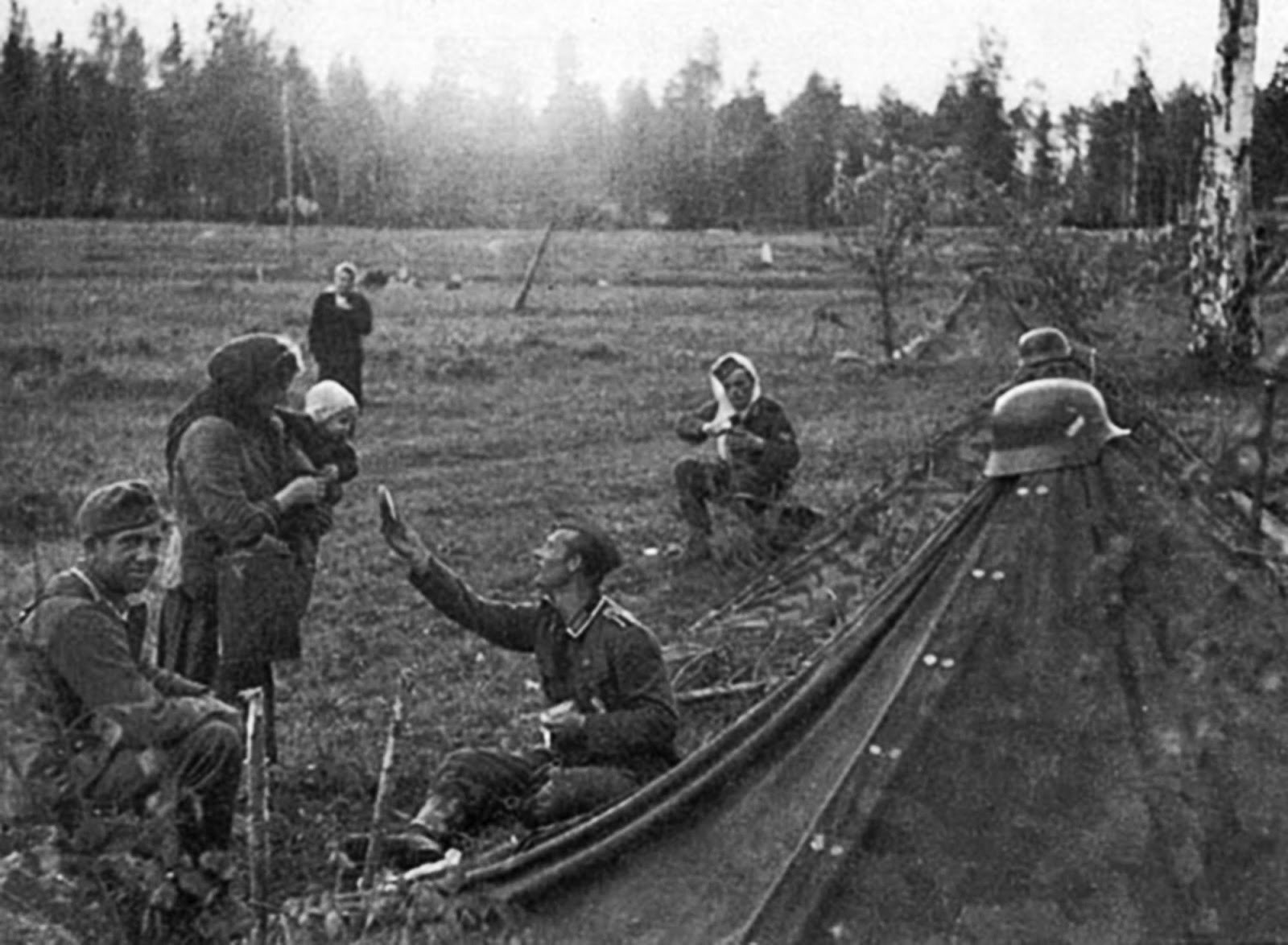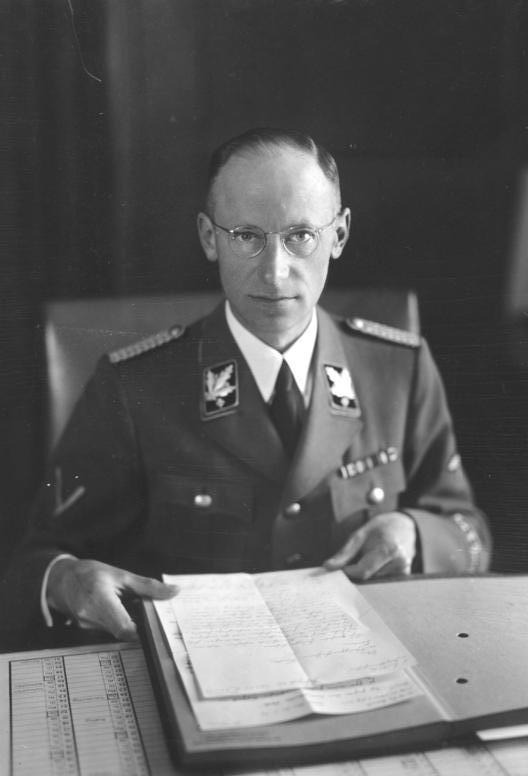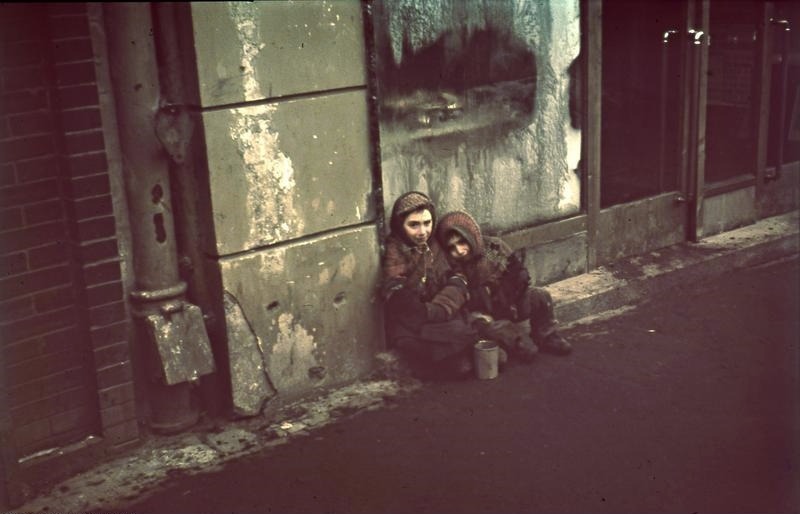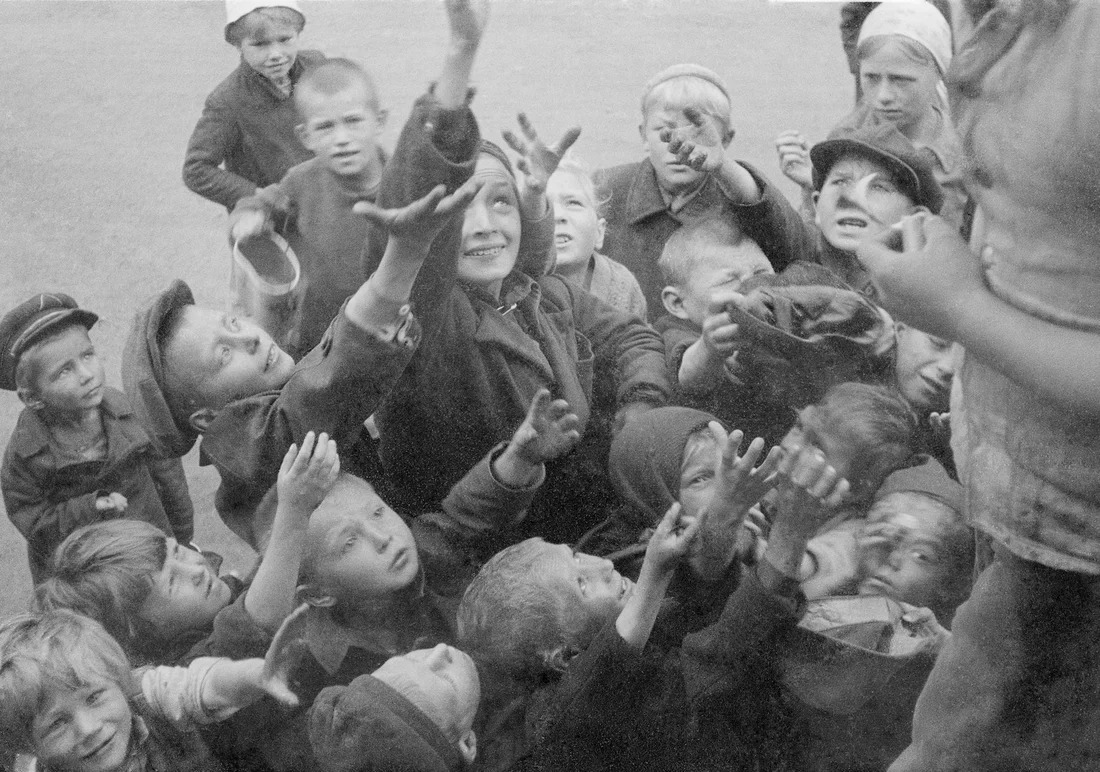Every photograph tells a story, but some go beyond just capturing a moment—they freeze history in time. Wartime photos, especially, bring out a mix of emotions—joy and sorrow, kindness and cruelty, victory and deep loss.
Some reveal the fine line between humanity and inhumanity during war. One such image is that of a German Wehrmacht soldier sharing food with a Russian mother and her child in 1941.
At first glance, the image may seem like a simple act of kindness. But in its historical context, it reveals a more complex and heartbreaking story.
This took place in a field far from the front lines during one of the bloodiest times of World War II—Nazi Germany’s invasion of the Soviet Union. Let’s uncover the darker story behind this image.
What The Photo Portrayed

The photo was taken by George Gundlach, the official photographer of the 291st Division of the Wehrmacht, during the early days of Operation Barbarossa. It appears in the album “Volkhov’s Battle: Documents of Horror 1941-1942”.
The image shows a German soldier sharing his food with a Russian woman and her child. Behind them, makeshift tents, supported by aluminum poles with helmets perched on top to keep the rain out.
The soldier in the picture belonged to the 291st Division, part of the German forces invading Soviet territory.
This division, like many others, was involved in the brutal fighting on the Eastern Front, particularly around Volkhov, a region known for its harsh conditions for both soldiers and civilians.
Yet, this seemingly kind gesture hides a much darker truth about the reality of life under Nazi occupation.
The ‘Hunger Plan’

The image becomes more poignant when placed in the context of The “Hunger Plan.” Devised by Nazi officials, this plan aimed to starve Soviet-occupied territories by redirecting all food and resources to feed the German military and civilians.
It wasn’t just about supplying German troops—it was also part of a bigger, darker plan to wipe out entire populations. The Nazis saw the people in these areas, especially Slavs, as lesser and unimportant.
By starving them, the Nazis believed they could clear the land for German settlers in the future as part of Hitler’s vision for more “living space” (called “Lebensraum”) for Germans.

Millions of men, women, and children dying from hunger. One historian noted, “The Hunger Plan did not just starve the people; it starved entire cities into extinction.”
Entire cities in Ukraine and Belarus were left to starve, and the countryside, once full of crops, became silent and empty.
The “Hunger Plan” was not an unintended consequence of war but a cold, calculated weapon of mass murder.
The Tragic Fate of Soviet Civilians

The heartbreaking part is that the soldier in the famous photo likely didn’t know how hopeless his kindness was. The larger Nazi system ensured the Soviet Union would starve no matter what.
Though the soldier in the picture may be offering food to the mother, the Wehrmacht as an institution participated in the destruction of villages, the mass execution of civilians, and the systematic starvation of entire regions.
The soldiers were given sweeping powers by the Nazi regime to suppress resistance, and orders such as the “Guidelines for the Conduct of the Troops in Russia” called for ruthless measures against “Bolsheviks, Jews, and guerrillas.”

The Russian mother and her child in the photograph were just two among millions who suffered at the hands of the Nazi occupation. Soviet civilians were subjected to forced labor, deportation, and starvation.
Many women were left to care for their children alone as their husbands were conscripted into the Soviet army or killed in the fighting. Entire communities were uprooted, and starvation became a daily reality for countless families as German forces seized food supplies.


